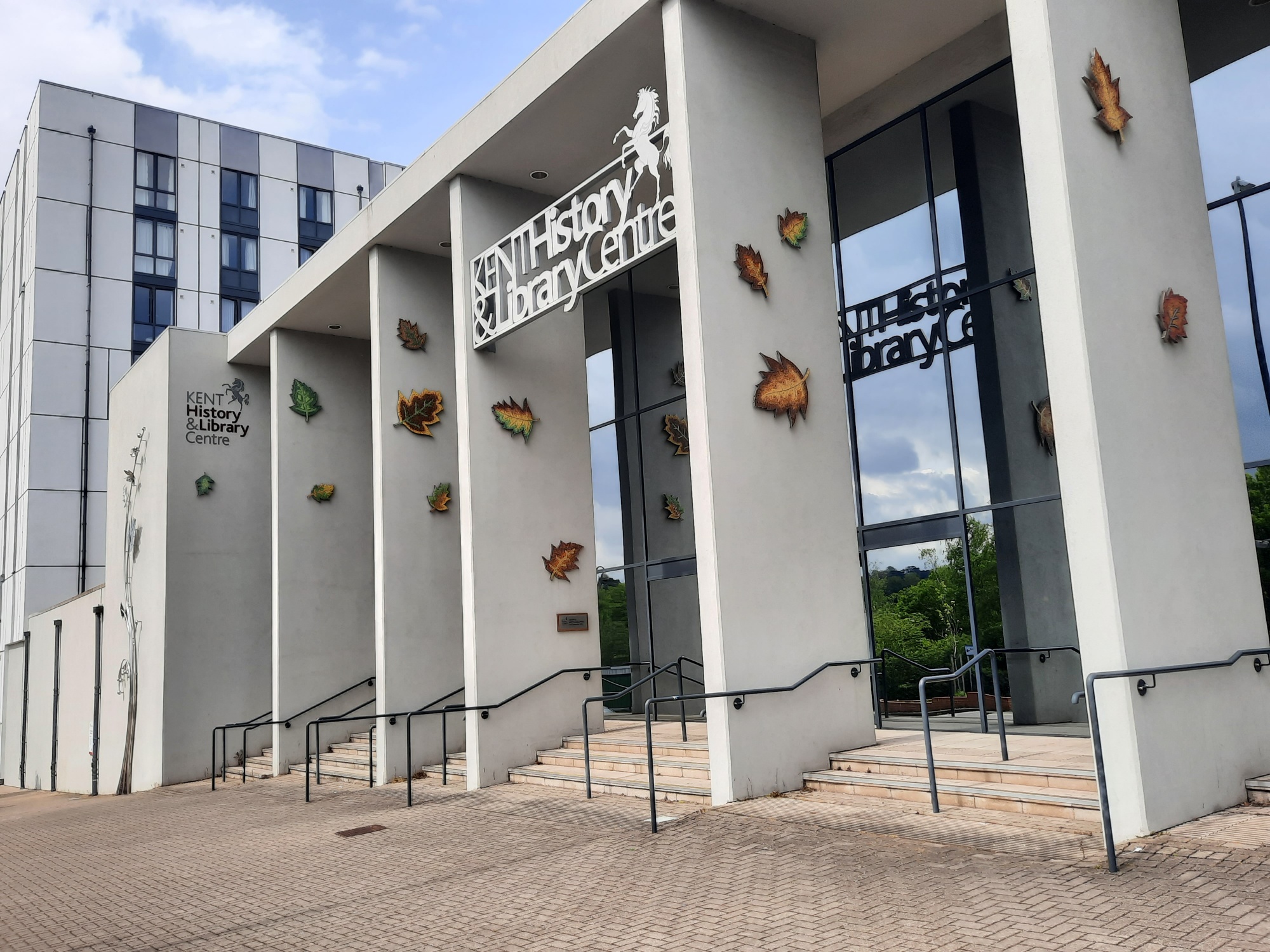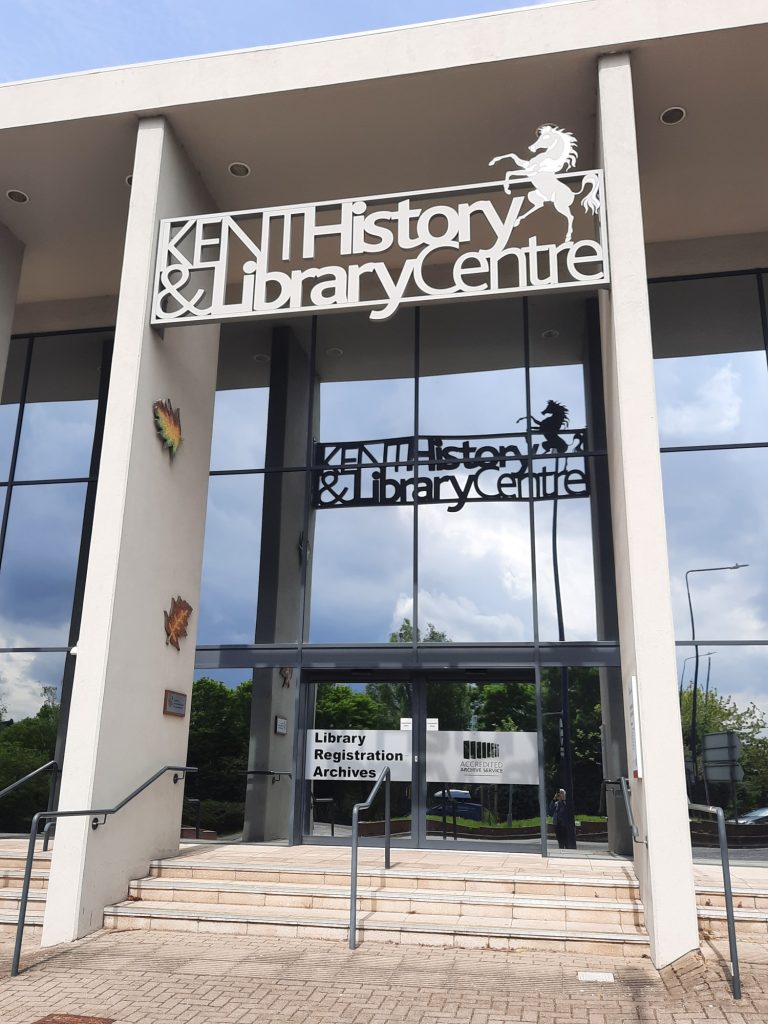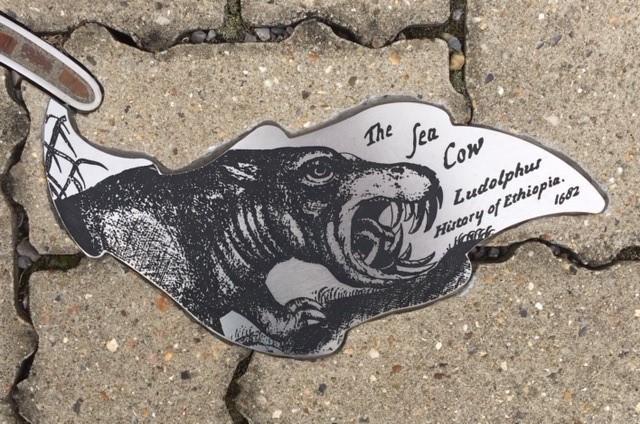Have you ever wondered which historic archives are kept in Kent? Read Jane and Bob’s accounts of visiting the county’s archives and how it could help with your research.
Jane’s Story
The tour started just outside the Archives research room, where there is a screen displaying films featuring Kent life from Screen Archive South East, which is the specialist archive in Brighton, where historical film of Kent is stored and preserved. ‘The Canterbury Tour’, for example, was filmed around 1923 along the High Street. The website is worth a browse to view commercially made films on specific events and footage donated by local families featuring everyday life. The film record links to related book resources and other archive collections.
We moved behind the scenes to see the Digital Service room where items are photographed or scanned and electronically transferred to customers. Scanning was also taking place of wills with a view to making them available online. The team are very interested in technological developments and visit trade shows. It was interesting to hear that AI is getting close to being able to read handwriting on historical documents and this will help with accessibility. The team are also proactive in offering commercial services to businesses who may wish to display historic documents relating to their buildings and environment.
We met the Archive Assistants who find the requests in the two strong rooms which consists of 14km of shelves. Their knowledge is relied on if the system goes down, as they know how the material is arranged. The tour moved into the upper strong room which is only accessible with high-tech key fobs which record the time and who is entering the space. Naturally the room smelled amazing due to the storage of so many beautiful documents in perfect conditions. The strongroom space consisted of manually driven moving shelves and plan chests for maps. The documents are in barcoded folders and arranged by colour coded sizes on the shelves to maximise the use of space.
Finally we met the Conservator in their space and looked at a couple of maps that were being assessed. Due to the time and cost of conservation, not all material is automatically treated. After conservation the material is digitised to make it more accessible. The Conservation News page outlines the processes.
Bob’s Story
My visit was at the start of the year, and similarly we got to see backstage and how all their archival material was stored and retrieved. The tour was very enjoyable and we got to see how they conserve and preserve some of the new acquisitions. In one room, we watched an incredibly old map have layers of glue and dirt gently removed, in order to preserve the item as much as possible. They have huge specialist sinks for items that have to be soaked in order to clean them. It’s very delicate work, and it’s fascinating to think about how some attempts to look after things (putting them in frames, repairing with cellotape, bindings, plastic covers) can both protect and damage an item, depending on the thinking of the time.
Our tour guide pointed out a great way of getting descriptions of people and scandals (such as witchcraft or cross dressing) that wouldn’t normally get recorded on conventional records, and these were by looking at the Quarter Sessions records and church court depositions. It’s difficult to search the archives by topic, as they don’t have any structured indexing or tagged items by subject but rather free text searching, so you’d have to have specific dates, places, people in order to find out alternative histories, themed or topic based searches.
As a rule the Kent History and Library archives don’t accept anything less than 20 years old for their archive. They’re in the process of setting up their archive to include Born Digital records, which is a daunting but logical next step. As our lives are increasingly governed by digital, rather than paper records, how will these be stored? And will they themselves become obsolete as technology continues to develop? We found something really reassuring about being in the cool rooms full of barcoded boxes, knowing that old maps and records were still able to be retrieved physically, to be held in your hand and touched. There’s no reason to believe that tangible objects would be more truthful than any digital records, but there’s something much more human about hand-drawn relics, these unique insights into our past.
As we left, we made a mental note for our next visit: bring a pound coin for the lockers and pencils to write with.
Outside is the Kent History Tree by Michael Condron and Anne Schwegmann-Fielding. Photograph by Michelle Crowther
Find out more
The Kent History and Library Centre opened in 2012 to house the county archives and town library, and you can see their collections page here.
There is a catalogue for looking up estate records, title deeds, private letters and diaries, parish records, probate records, transport plans and KCC documents among many others. They can even copy items for you if you’re unable to visit the Kent History and Library Centre in person.
When collections of records have been digitised, they are made available for researchers on FindMyPast which is free to access from any Kent public Library. The collections include Kent baptisms, marriages and burials, consensus, schools registers and parish lists.
If you have not used archival material in your studies before, you may wish to find out more via the Learning Skills Hub module Using Archives and Special Collections or explore some of the case studies on AM Research Methods. These include case studies on using photographs, diaries, cartoons and other source types in your research.
If you are interested in Kent history, you will also find the Kent Maps Online project has some interesting articles on Kent history.
You may also like to read our blog posts about visiting Canterbury Cathedral Archives and Library.
 Library
Library Michelle Crowther
Michelle Crowther 1975
1975




